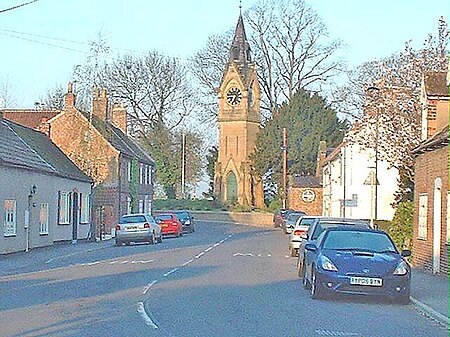Airmyn

Airmyn is a village and civil parish in the East Riding of Yorkshire, England. It is situated at the mouth of the River Aire with the River Ouse, approximately 2 miles (3.2 km) north-west of Goole. It lies to the west of the M62 motorway and the A614 road. According to the 2011 UK census, Airmyn parish had a population of 768, a fall from the 2001 UK census figure of 795. The parish covers an area of 1,155.353 hectares (2,854.94 acres). The parish was part of the Goole Rural District in the West Riding of Yorkshire from 1894 to 1974, then in Boothferry district of Humberside until 1996. In the Middle Ages, Airmyn was a small port, and up to the 18th century its dead were taken by boat upstream to be buried at Snaith, as it was quicker to go by river than by horse and cart.
Excerpt from the Wikipedia article Airmyn (License: CC BY-SA 3.0, Authors, Images).Airmyn
Park Road,
Geographical coordinates (GPS) Address Nearby Places Show on map
Geographical coordinates (GPS)
| Latitude | Longitude |
|---|---|
| N 53.719242 ° | E -0.900487 ° |
Address
Park Road
Park Road
DN14 8LP , Airmyn
England, United Kingdom
Open on Google Maps










